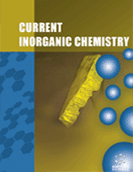Abstract
Background: Molecular molybdenum cluster sulphides are an unexpensive alternative to noble metal based homogenous catalysts. In this paper, we present the synthesis of the first PNP Mo3S4 derivative as well as the crystal structure of the isomer which contains the ligand bound in a bidentate fashion. The potential of this new complex as precursor for heterobimetallic systems is also analyzed.
Objectives: The main objective of this study was to synthesize new cuboidal clusters containing the Mo3S4 unit and aminodiphosphanes.
Methods: Standard Schlenk techniques were used for reactions carried out under nitrogen atmosphere. Electrospray ionization (ESI) mass spectra were recorded with a Quattro LC (quadrupole-hexapolequadrupole) mass spectrometer with an orthogonal Z-spray electrospray interface (Micromass, Manchester, UK). The cone voltage was set at 20 V using CH3CN as the mobile phase solvent. Nitrogen was employed as drying and nebulising gas. 31P NMR spectra were recorded on a Varian Innova 300 MHz using CD2Cl2 as solvent. Compounds (Bu4N)2[Mo3S7Cl6] and [Mo3S4Cl4(PPh3)3(H2O)2] were prepared by following literature procedures. The remaining reactants were obtained from commercial sources and used as received. Solvents were dried and degassed by standard methods before use.
Results: The aminodiphosphane molybdenum (IV) cluster complex of formula [Mo3S4Cl3(2(P,N)- PNP)3]Cl (PNP = bis[(2-di-i-propylphosphino)ethyl]amine) [Mo-1]Cl has been isolated in high yields by reacting [Mo3S4Cl4(PPh3)3(H2O)2] with stoichiometric amounts of the PNP ligand. Characterization of [Mo-1]+ by ESI-MS, 31P{1H} NMR and single-crystal X-ray diffraction confirms that aminodiphosphanes bind as bidentate ligands to the Mo3S4 unit leaving three uncoordinated phosphino groups. The dangling phosphino groups can substitute the chloride ligands and coordinate to the cluster core in the presence of AgBF4 to give the complex of formula [Mo3S4(3-PNP)3](BF4)4 ([Mo-2](BF4)4). The tridentate coordination of the aminodiphosphane ligands to the Mo3S4 cluster unit in ([Mo-2]+ is confirmed by 31P{1H} NMR and elemental analysis.
Conclusion: Our results indicated that Mo3S4 cluster cores can be functionalized with aminodiphosphine groups acting as bidentate or tridentate ligands.
Keywords: Molybdenum sulfides, trinuclear clusters, aminodiphosphane complexes, denticity, elemental analysis, ligands.
Graphical Abstract
 16
16 2
2 1
1 1
1

